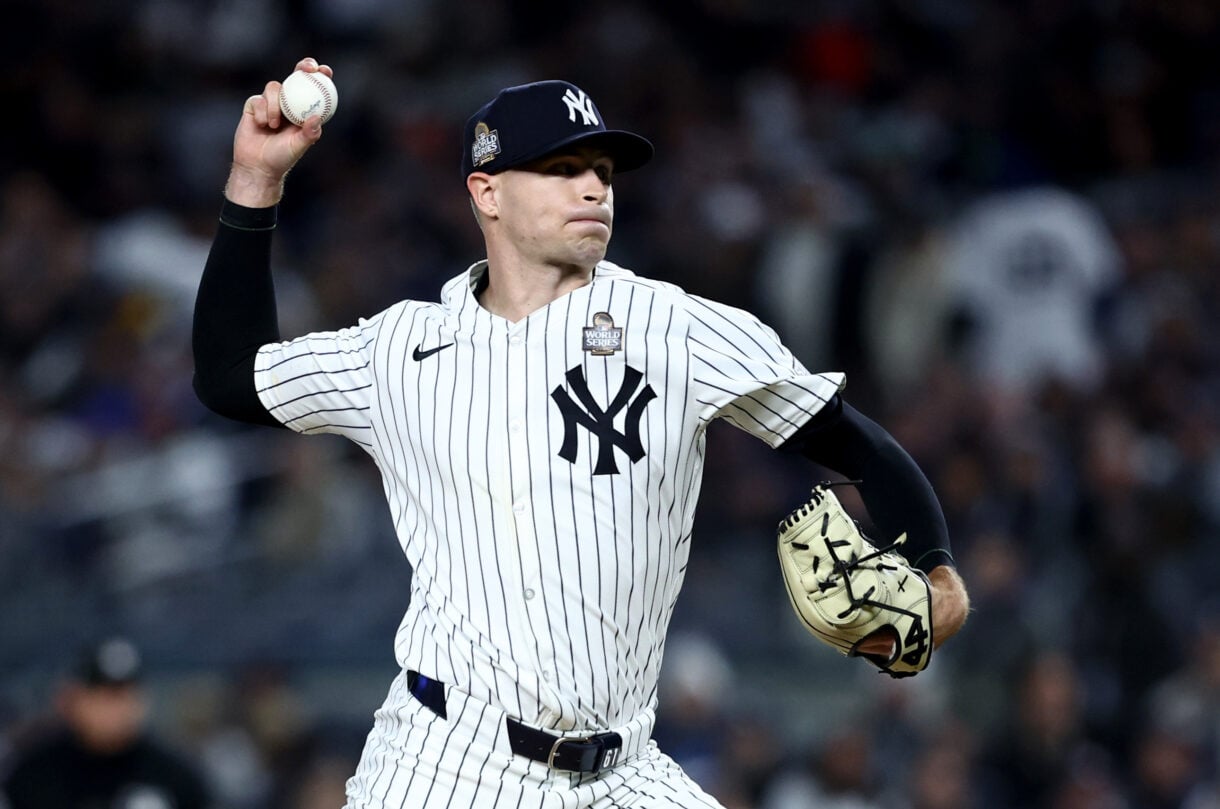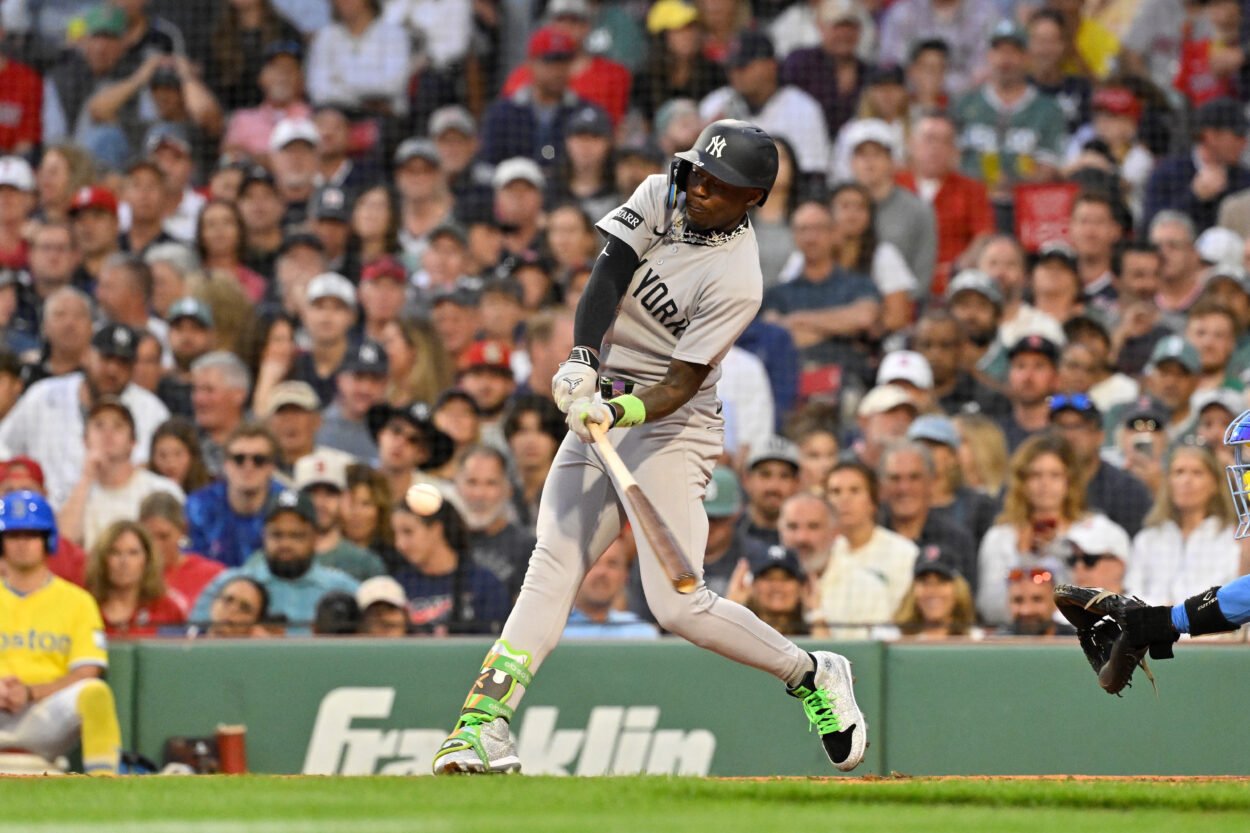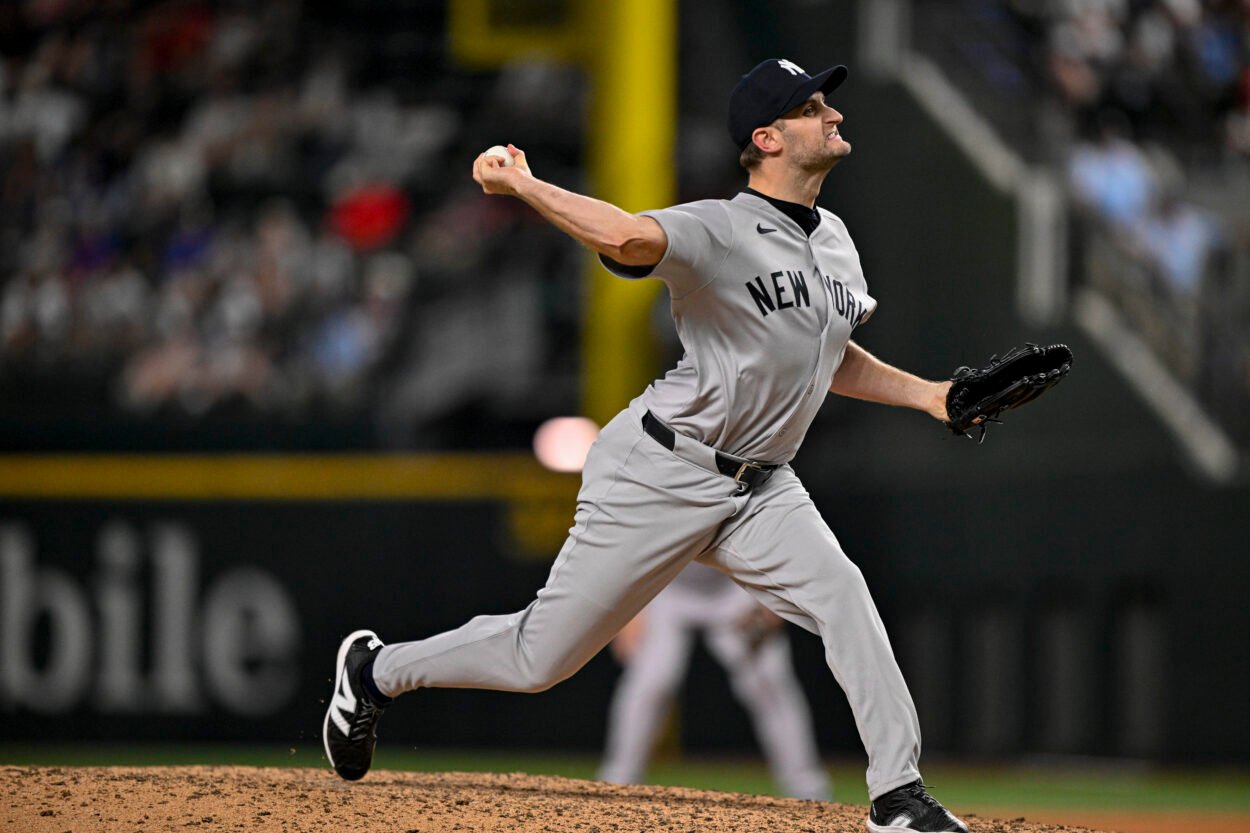
A roster crunch doesn’t usually reveal a team’s priorities this early, but the New York Yankees have forced the issue. Before Thanksgiving even hits, they’ve already tipped their hand on how they see the next year taking shape. Trent Grisham accepting the 22.025 million qualifying offer set the tone. Protecting Chase Hampton, Spencer Jones, and Elmer Rodriguez from the Rule 5 Draft wasn’t a surprise, but it was a reminder that the organization is quietly rebalancing its depth chart.
Now comes the kind of decision day that tests a front office’s conviction.
Sorting through the arbitration crowd
The Yankees have 14 arbitration-eligible players, and most of the choices aren’t worth sweating. Jazz Chisholm Jr., David Bednar, Clarke Schmidt, Camilo Doval, Luis Gil, Fernando Cruz, Anthony Volpe, and Jose Caballero will likely be tendered contracts without much discussion. They’re either core pieces or, at minimum, essential to next year’s plan. Oswaldo Cabrera fits almost the same description, even if he’s coming off a season cut short by injury.

The drama sits elsewhere, and it sits squarely in the bullpen.
Five right-handed relievers find themselves on the bubble, each with a case that looks a little different depending on what angle you choose. For a club trying to build a cleaner, more reliable relief mix, this is the part of the roster where the Yankees can reshape things quickly.
The complicated cases in the bullpen
Mark Leiter Jr. is the kind of pitcher the Yankees typically like to keep around: an elite splitter, a strikeout rate near 25 percent, and enough unpredictability to bother hitters in October. But the injuries and his inconsistency caught up to him, and the results did too. A 4.84 ERA, even with the bat-missing upside, makes him vulnerable. If the Yankees think this was injury-related rust and nothing more, he survives. If not, they may decide they can find better production elsewhere for less risk.
Jake Bird represents a different dilemma. The Yankees gave up meaningful capital at the deadline to get him from Colorado, the kind of move that usually buys a player a longer runway. But a 27.00 ERA in pinstripes and a failed attempt to reclaim a roster spot in Triple A shifts the conversation. It’s hard to cut bait this quickly, yet it’s also hard to justify a guaranteed role for 2026 based on hope alone.

Jake Cousins brings talent the Yankees love and availability they cannot count on. Tommy John surgery in June makes him a near-certain zero for 2026, which complicates the math. Do they want to pay to hold his rights for a year of rehab with no games? Some clubs do that without blinking. Others treat the 40-man as too valuable a commodity to stash long-term injured relievers.
Ian Hamilton’s story is less dramatic but still uncertain. His 2023 season looked like a breakout, but a viral illness, blister trouble, and inconsistent command pulled him back to earth. ERAs of 3.82 and 4.28 the last two seasons aren’t bad, yet the Yankees need to decide if that profile still fits a staff trying to get more dominant, not more stable.
And then there’s Scott Effross. The Yankees acquired him in 2022 hoping he’d be a multi-year weapon. Instead, long-term injuries and diminished stuff have turned him into a question mark. His situation feels like the toughest call: is there another rebound left, or is it time to move on?
What Friday really means
This tender deadline won’t make headlines outside New York, but it’s a real inflection point. The Yankees are trying to tighten their roster, sharpen the bullpen, and leave room for bigger moves later this winter. Which relievers survive the cut will tell us exactly how aggressively they plan to retool and how much patience remains for players who’ve struggled to stay healthy or effective.
Friday won’t reshape the Yankees on its own, but it will reveal their blueprint. And that’s often where the story of an offseason really begins.
